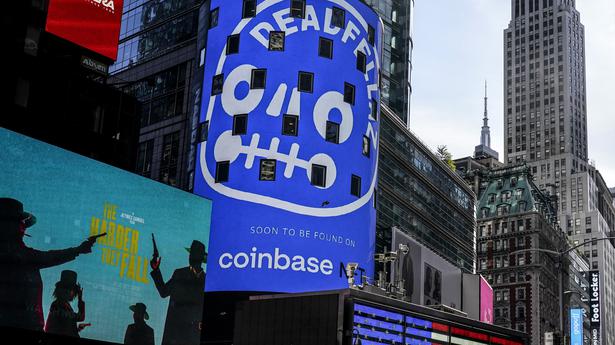Only for representative purposes
| Photo Credit: Getty Images
The story so far: Last week, government officials informed that 20 Russian banks, including Rosbank, Tinkoff Bank, Centro Credit Bank and Credit Bank of Moscow have opened Special Rupee Vostro Accounts (SRVA) with partner banks in India. All major domestic banks have listed their nodal officers to sort out issues faced by exporters under the arrangement.
What is the SRVA arrangement?
A vostro account is an account that domestic banks hold for foreign banks in the former’s domestic currency, in this case, the rupee. Domestic banks use it to provide international banking services to their clients who have global banking needs. It is an integral offshoot of correspondent banking that entails a bank (or an intermediary) to facilitate wire transfer, conduct business transactions, accept deposits and gather documents on behalf of the other bank. It helps domestic banks gain wider access to foreign financial markets and serve international clients without having to be physically present abroad.
The SRVA is an additional arrangement to the existing system that uses freely convertible currencies and works as a complimentary system. For perspective, freely convertible currencies refer to currencies permitted by rules and regulations of the concerned country to be converted to major reserve currencies (like U.S. dollar or pound sterling) and for which a fairly active market exists for dealings against major currencies. The existing systems thus require maintaining balances and position in such currencies.
How does it function?
The framework entails three important components, namely, invoicing, exchange rate and settlement. Invoicing entails that all exports and imports must be denominated and invoiced in INR. The exchange rate between the currencies of the trading partner countries would be market-determined. To conclude, the final settlement also takes place in Indian National Rupee (INR). The authorised domestic dealer banks (those authorised to deal in foreign currencies) are required to open SRVA accounts for correspondent banks of the partner trading country. Domestic importers are required to make payment (in INR) into the SRVA account of the correspondent bank against the invoices for supply of goods or services from the overseas seller/supplier. Similarly, domestic exporters are to be paid the export proceeds (in INR) from the balances in the designated account of the correspondent bank of the partner country.
As for availing an advance against exports, it would be the responsibility of the domestic bank to accord foremost priority to ensuring that the available funds are used to meet existing payment obligations, that is, from the already executed export orders or export payments in the pipeline. All reporting of cross-border transactions are to be done in accordance with the extant guidelines under the Foreign Exchange Management Act (FEMA), 1999.
What is the eligibility criteria of banks?
Banks from partner countries are required to approach an authorised domestic dealer bank for opening the SRVA. The domestic bank would then seek approval from the apex banking regulator providing details of the arrangement.
It would be the responsibility of the domestic banks to ensure that the correspondent bank is not from a country mentioned in the updated Financial Action Task Force (FATF) Public Statement on High Risk & Non-Co-operative jurisdictions. Domestic banks must also put forth for perusal, financial parameters pertaining to the corresponding bank.
Authorised banks can open multiple SRV accounts for different banks from the same country. Further, balances in the account can be repatriated in freely convertible currency and/or currency of the beneficiary partner country depending on the underlying transaction, that is, for which the account was credited.
What is its purpose?
The Economic Survey (2022-23) had argued that the framework could largely reduce the “net demand for foreign exchange, the U.S. dollar in particular, for the settlement of current account related trade flows”. It added that the framework would also reduce the need for holding foreign exchange reserves and dependence on foreign currencies, making the country less vulnerable to external shocks. Indian exporters could get advance payments in INR from overseas clients and in the long-term promote INR as an international currency once the rupee settlement mechanism gains traction, the survey argued.
As per the Bureau for International (BIS) Settlements’ Triennial Central Bank Survey 2022, the U.S. dollar was the most dominant vehicle currency accounting for 88% of all trades. The INR accounted for 1.6%.







